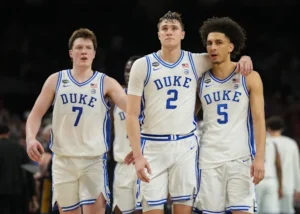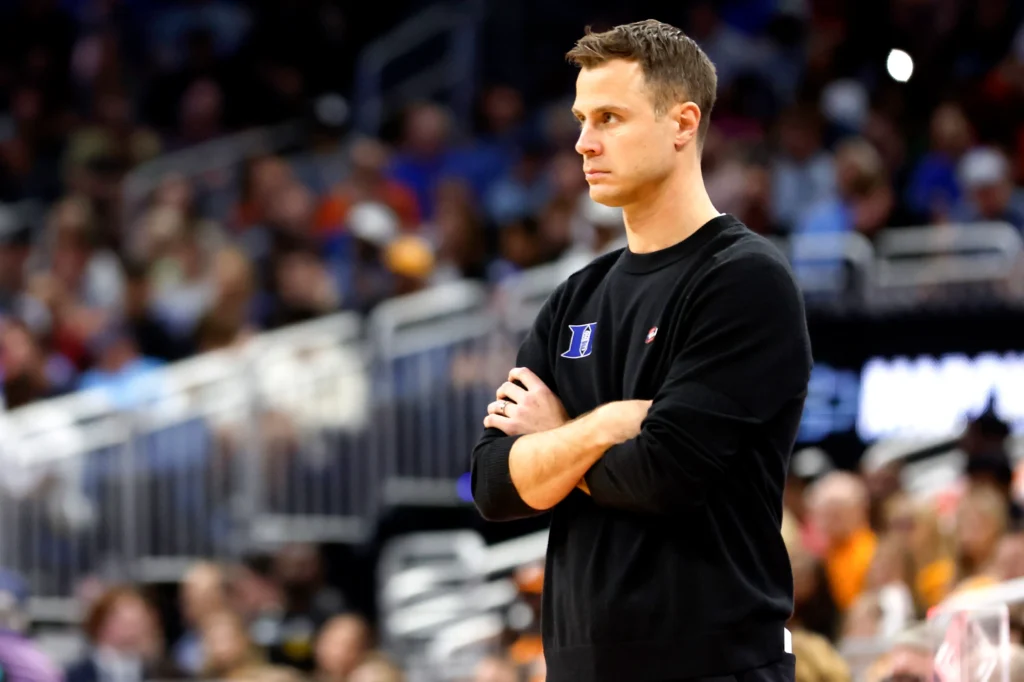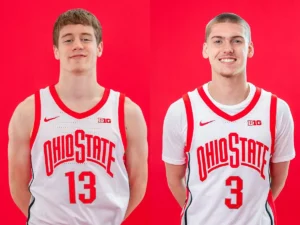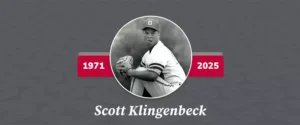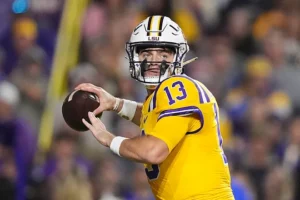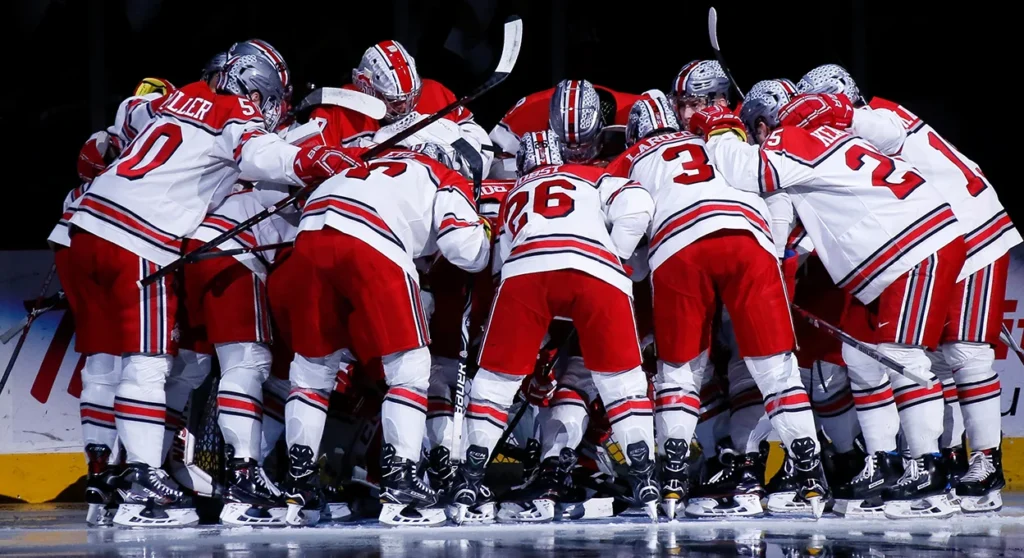
In Columbus, Ohio State men’s ice hockey is not merely skating—it’s surging. Once considered a program in the Big Ten’s shadows, the Buckeyes have exploded onto the national stage, completing their 2024–25 campaign with a 24‑14‑2 record, reaching the NCAA tournament for the eleventh time in program history, and earning respect as a legitimate contender. Under twelfth-year head coach Steve Rohlik, Ohio State now confronts fresh expectations: build sustained excellence, return to the Frozen Four, and claim its place among the nation’s elite.
A proud program with roots dating to the early 1960s, Ohio State first made semifinal runs in 1998 and 2018. Its move from the CCHA to the Big Ten in 2013 placed it among powerhouses like Michigan and Minnesota, and its true breakthrough appears imminent. Home to the 17,500-seat Value City Arena, the team routinely ranks among the NCAA’s top attendance figures, symbolizing a fanbase hungry for success.
Rohlik has overseen consistent growth. In 2019, he guided Ohio State to the Big Ten regular-season title and has claimed three Big Ten Coach of the Year awards, including the most recent in 2025. That honor recognized an extraordinary season: projected to finish last in the Big Ten preseason rankings, Ohio State instead fought its way into the conference championship game and entered the NCAA tournament with serious momentum. It was a transformation fueled by determination, tactical clarity, and smart roster construction.
A youthful yet focused core, bolstered by impactful transfers and freshmen, helped power the resurgence. Graduate forward Gunnarwolfe Fontaine, transferred from Northeastern, led the team in scoring and was a standout performer in the Big Ten playoff tournament. Riley Thompson, another transfer from Alaska–Anchorage, brought blazing speed and an ability to generate offense under pressure. Defenseman Damien Carfagna and forward Davis Burnside added physicality and leadership, especially in tight postseason matches. Returning upperclassmen like Joe Dunlap, Patrick Guzzo, Brent Johnson, Theo Wallberg, and Max Montes helped maintain a balance of experience and hunger in the locker room.
Goaltending, often the key to postseason success, became a fortress of consistency. Logan Terness and Kristoffer Eberly split duties, combining for a .914 team save percentage—third-best in the Big Ten and tied for fifteenth nationally. Terness delivered a career-best season, posting a 2.23 goals-against average and a .924 save percentage in several crucial wins, including a highlight-reel performance in a stunning upset of No. 2 Michigan State. Eberly, in limited action, was nearly flawless, recording a 1.60 GAA and a .933 save percentage, including a shutout on the road against Bowling Green.
The offense averaged 3.2 goals per game, totaling 127 goals on over 1,200 shots. Fontaine led a diverse attack that, while inconsistent on the power play, remained dangerous through transition and opportunism. The power-play conversion rate lagged at just 17.5 percent, but the Buckeyes made up for it with five shorthanded goals and eight empty-netters—proof of a unit capable of striking in unconventional moments.
Special teams were a mixed bag. The penalty kill operated with reliable structure and effort, routinely frustrating opposing top lines, while the power play struggled to capitalize in key moments. Still, the defensive discipline and commitment to blocking shots helped the Buckeyes maintain one of the better goals-against marks in the conference.
The 2024–25 season featured several high points. A perfect 5‑0‑1 start on the road, including a sweep at Bowling Green, set the tone. Later, a sweep of Penn State—the first in years—signaled a team that could not just surprise but dominate. Signature wins against Michigan (4‑3 in Ann Arbor) and Michigan State (4‑2 at home) confirmed the Buckeyes’ rising profile. The postseason run, culminating in a narrow overtime loss to Michigan State in the Big Ten Championship, demonstrated just how far the team had come in a single year.
Looking ahead to 2025–26, the Buckeyes face both exciting potential and inevitable challenges. Key departures will test their depth. Graduating seniors and professional departures include Stephen Halliday, Cam Thiesing, Scooter Brickey, and Matt Cassidy—players who defined the team’s character and contributed consistently. Their absence will be felt on both special teams and in the locker room.
However, much of the core remains intact. Fontaine, Burnside, Guzzo, Montes, Dunlap, Johnson, and Wallberg are all expected to return and lead the next chapter. The leadership group is experienced, battle-tested, and eager to elevate Ohio State even further. Fontaine in particular, having thrived in the Big Ten after transferring in, appears poised to be among the league’s premier forwards.
Recruiting has also taken center stage in recent years, and the program’s future appears strong. First-year players like James Hong, Nathan Lewis, Noah Powell, and Riley Thompson—should they stay—offer a blend of USHL pedigree and developmental upside. On the blue line, promising additions such as Chris Able and Chris Romaine bring size, mobility, and transitional awareness. If Terness and Eberly return between the pipes, the goaltending position will remain a pillar of stability.
The Big Ten, however, remains a battlefield. Michigan, Minnesota, Wisconsin, and Penn State continue to reload with top-tier NHL talent and depth at every position. To remain in the mix, Ohio State will need to open the season sharp and stay healthy, particularly on the back end. Early non-conference matchups will be vital for establishing rhythm and building the kind of confidence that led to last season’s success.
Tactically, the Buckeyes will need to focus on closing games—a lingering issue at times last season. Despite a resilient identity, too many games saw late leads slip away or crucial penalties disrupt momentum. Improving faceoff percentages, reinforcing late-game composure, and enhancing special teams efficiency will be focal points in fall practices.
From a culture standpoint, the Buckeyes are trending in the right direction. Rohlik’s program emphasizes accountability, work ethic, and unity. Players consistently speak about the tight-knit locker room and the sense of shared purpose. Off-season workouts, team retreats, and leadership development are now woven into the program’s DNA.
The fanbase is responding, too. Attendance continues to grow at Value City Arena, especially for rivalry games and postseason play. The student section has returned to form, giving the Buckeyes a clear home-ice advantage. Increased media attention, alumni engagement, and university support all point toward a program on the cusp of something bigger.
Real progress in 2025–26 would mean a return to the Frozen Four—a feat achieved only twice before. While that’s a lofty goal, it’s no longer a dream. It’s a realistic ambition for a program with the tools, talent, and leadership to make it happen.
As the puck prepares to drop on a new season, Ohio State men’s hockey stands at a pivotal crossroads. The team is no longer an underdog; it’s a respected force. Whether the Buckeyes climb higher will depend on the continued growth of young stars, the emergence of new leaders, and the ability to maintain the grit and cohesion that defined their latest campaign.
There is excitement in Columbus—excitement not just for what the Buckeyes accomplished last year, but for what lies ahead. For the first time in a long while, Ohio State hockey is not chasing a moment—it’s building a legacy. And the rest of the country is beginning to notice.


